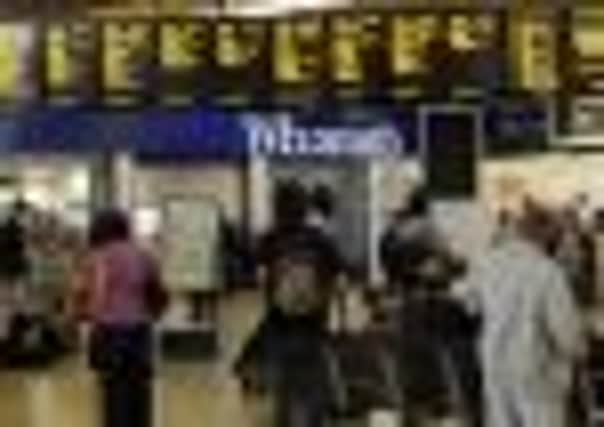Nick Quin: Rail divide leaves North stuck in the sidings


The divide is no less stark in transport investment – which has consistently lagged behind in Yorkshire and across the North. It presently stands at £802 per head in London compared to just £272 in Yorkshire.
The Government points to the number of passengers travelling in London and the promise of high speed rail, which has been marked out as “a once in a generation opportunity to transform Britain’s transport infrastructure” by Philip Hammond, the Transport Secretary.
Advertisement
Hide AdAdvertisement
Hide AdIn London, there is a rapid transformation going on at the major transport hubs around the city.
You can’t miss the building work – even though it is the capital’s termini that require urgent action to ease overcrowding, according to a report published yesterday by Network Rail.
Despite NR’s gloomy assessment, the striking ring of grand stations circling the city are undergoing a major facelift, with new features for commuters being created to ensure that they are at the heart of modern transport infrastructure. If there are overcrowding issues, why have they not been addressed at the outset?
The facelifts have been described as a ‘great railway station renaissance’, with major work to stations from King’s Cross to Waterloo.
Advertisement
Hide AdAdvertisement
Hide AdThe results can be spectacular with the new-look St Pancras station an awe-inspiring example.
The work under way at King’s Cross – the hub for the East Coast mainline – is an exciting project to merge the station’s oldest features with modern needs. The end of a two-and-a-half hour journey from Leeds to London will no doubt be made sweeter by a grand finale at a revamped station.
The economic benefits will be felt by Londoners too – London’s Evening Standard noted recently that “costly they may be, but the value of such transformational schemes must not be forgotten even when money is short”.
And costly they are. St. Pancras cost £800m while King’s Cross is projected to cost £400m. It doesn’t stop there: £1bn is being spent making Tottenham Court Road ready for Crossrail: a brand new line linking the East and West through London’s heart.
Advertisement
Hide AdAdvertisement
Hide AdIt is the developments taking place around the stations that make sure the investments are worthwhile. The Eurostar terminal has brought Europe closer; the Midland Hotel has been restored to its former glory; Crossrail will transform commuter travel; and the King’s Cross plans also feature significant private investment.
Those lessons must be put into practice in Yorkshire if high speed rail is going to be a success.
When the line is finally built, London will be just 80 minutes away from Leeds – whereas now it is quicker for someone to get to Brussels from the capital.
But what about people in Hull, Harrogate, or even Horsforth? What about investors looking to relocate to the edge of our cities?
Advertisement
Hide AdAdvertisement
Hide AdTo achieve the best results in terms of inward investment and commuting times, a vision of infrastructure allied to high-speed rail needs to be mapped out – within and around Yorkshire’s cities – not just between North and South.
But Government support for schemes seems to be fleeting, and continues to recede into the distance. Leeds Station’s southern entrance received the go-ahead from Government at a cost of £12.4m to improve access to the offices and apartments nearby. Although highlighted by Network Rail, it needs improvements now and not in 2019, the vague date mentioned in the report.
But other projects are still in limbo – despite often enjoying enthusiastic and constructive local support.
In Yorkshire alone, there are nine schemes in the process – competing nationally with 36 others for £630m of funding. These include new carriages for Sheffield Supertram, the White Rose way at Doncaster, Access Park and Ride in York and two new stations in Leeds.
Advertisement
Hide AdAdvertisement
Hide AdThese investments cost money, but not on the same scale as that being spent in London. The 45 projects competing across the country are vying for less than two-thirds of what is being spent on a single London tube station.
At a time when we need to rebalance the economy, this is spending that should be seriously considered, and spending that could ensure that high speed rail is as valuable as it can be.
I look forward to disembarking at King’s Cross in spectacular surroundings, especially if it is only 80 minutes away. But if Yorkshire is really going to see the benefits of high speed rail, it will take more than nice entrances and vague promises.
It will need the funding and support to overhaul local rail services in the interim, starting here in Yorkshire.
Nick Quin is a political researcher and academic from Leeds.